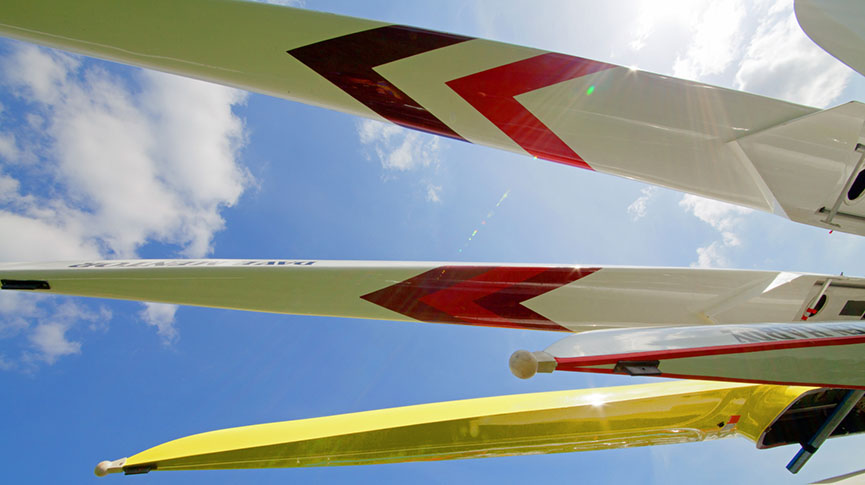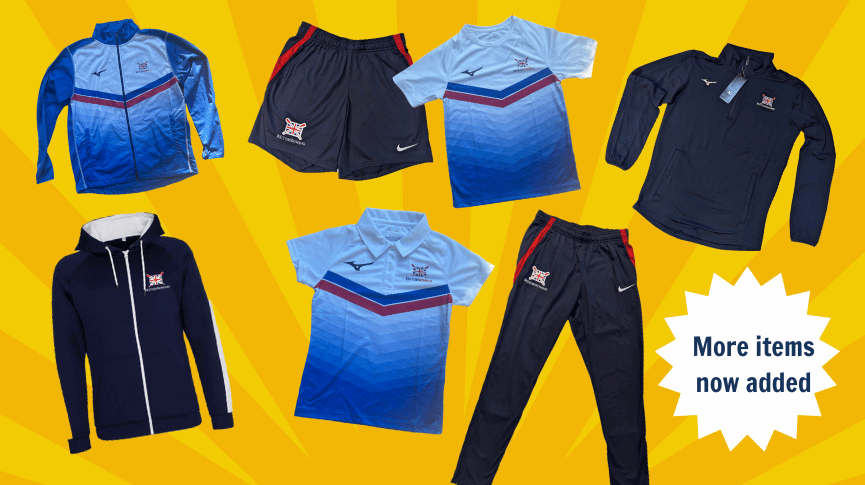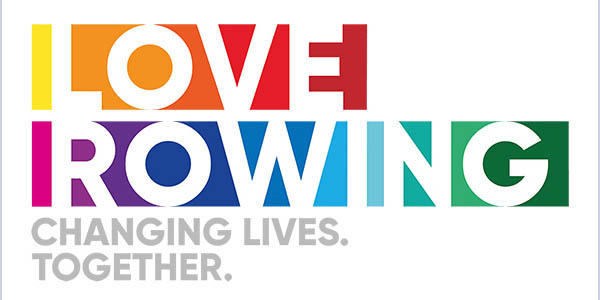Towing rowing trailers to the EU
Understanding the paperwork and logistics necessary for towing boats between the UK and the EU for training camps or racing

After Brexit, there are rules on moving equipment about Europe that must be followed. This is not a short process, so don’t leave it to the last minute. Getting it wrong could cost you a lot of money in taxes, get your equipment impounded, or even stop your equipment from leaving the country.
The requirements do change from time to time so clubs should always check the latest position on Government websites and/or with a specialist. British Rowing and the GB Rowing Team cannot be held responsible for any errors made by clubs relating to towing trailers to and from the European Union (EU).
Documentation
ATA Carnet
To travel outside of the UK you will need documentation to temporarily take goods called an ATA Carnet (temporary export/import document). ATA stands for ‘Admission Temporaire/Temporary Admission’.
An ATA Carnet is a passport for equipment. It proves to customs that goods have been exported/imported with the full intention of being imported/exported back to their origin in their entirety. This avoids having to pay import duty and VAT when travelling abroad and back.
UK Carnets can be ‘bonded’ (valid for) 2, 6 or 12 months depending on how long you’re going for.
A trip into the EU block and back requires a minimum of four pieces of paperwork to be ‘stamped’:
- One when leaving the UK
- One on arrival into another country (EU)
- One on exit from the EU
- One on entry back into the UK.
If you are travelling beyond the EU/Schengen area, to Serbia for example, this will require further ‘stamps’.
The GB Rowing Team uses a freight forwarder, EFM Global, to raise its Carnets but other freight forwarders exist. EFM Global have considerable expertise in this (we worked with them to ship boats to Australia for the 2000 Olympic Games, for example) and advised the UK Government on Carnet documentation in the lead up to Brexit. You really do need an expert to do this for you; trying to do it yourself risks incurring substantial fines on return to the UK if you get any of it wrong. For reference, one British club is believed to have been charged in the region of £12,000 for one trailer.
How to contact EFM Global
Email: [email protected]
Tel: +44 1784 223960
To raise a Carnet, you need to provide your freight forwarder with:
- Manifest of the equipment including the make, model, ‘layman’s’ term description, quantity, current value, country of origin and a total weight required. Include serial numbers if available. The items on a manifest CANNOT be changed once it has been raised.
Note that the current value should be the resale value of the equipment and not the current new prices. This valuation is for customs purposes and does not affect the insurance valuation of the goods. Using new prices for older equipment unnecessaily increases he cost of the Guarantee Premium Bond. - A letterhead template for your club or organisation: the freight forwarder will use this to produce a Letter of Authority, which must be signed before you get to customs by the individuals who are in the towing vehicle.
- Territories – All countries to which you are intending to travel including those through which you will be transiting and your final destination. Be very clear which country is your final destination. It it’s outside the EE, that country will require your entry into the EU to be stamped for transiting the EU rather than straightforward entry into the EU.
- Bond duration or how long your equipment will be outside the UK (2, 6 or 12 months). NB Alongside this, the physical carnet document is valid for 12 months so it can be re-bonded for more uses as long as the equipment is exactly the same as listed on the manifest; nothing can be added on once it has been raised.
Tip: Word your Carnet manifest descriptions so they can be understood by someone with no knowledge of rowing.
Carnet limitations
It is important to highlight that EFM raise Carnets ‘in house’ for when the goods are based in the UK.
When the Carnet request is not for a UK-based organisation and the goods are not in the UK, they cannot raise a Carnet ‘in house’. In this instance the Carnet has to be raised by one of their agents in the country where the client and goods are based.
For example, if you wish to tow a boat from Germany that’s owned by a German organisation (on loan or hire, for example), the Carnet has to be raised by EFM’s agents in Germany. In most cases the respective country will not raise the Carnet without also controlling the transportation.
If looking to tow boats owned by a UK or organisation from the EU into the UK, please be aware that it will be more difficult to get a Carnet raised without the transportation being controlled by the agent in that EU country. This rare situation applies, for example, to boats that have been located in the EU since before Brexit.
Note that purchases and imports are not covered by the Carnet system. EU-based boat builders know the paperwork required for them to export boats to the UK; it’s worthwhile allowing them to handle this rather than trying to save money by going to pick up a new boat yourself.
Goods Movement Reference (GMR)
This is a new requirement since January 2022. The GMR is a reference number and barcode for each vehicle, on each movement, leaving Great Britain. Drivers must present it at the port of departure to prove that their goods have pre-lodged all the necessary declarations.
Information required:
- Truck details and registration number
- Copy of the ATA Carnet and Manifest (EFM can then obtain the UK shipper, number of pieces and gross weight from this)
- UK shipper’s EORI (Economic Operators Registration and Identification) number
- Consignee/Delivery address
- Date of crossing
- Port to port (UK to EU).
Safety and Security Declaration/Entry Summary Declaration/ENS
From 31 January 2025, any goods imported from the EU to Great Britain by a transport company must be covered by a Safety and security declaration (also known as an ‘entry summary declaration’ or ‘ENS’). THis is NOT required if the owner of the goods are moving it themselves.
Information required:
- Loading address (e.g. training camp or racing venue)
- Unloading address (e.g. of your home club)
- Driver name and copy of their passport
- Vehicle registration and length (vehicle only – not including trailer)
- Carnet number
- Goods description (e.g. Sports equipment)
- Sailing details for vehicle – route plus method (e.g. Calais via Eurotunnel, Rotterdam via ferry).
If travelling by ferry, supply vessel name and International Maritime Organisation (IMO) number.
Notes
- There is no requirement for a Green Card (an international certificate of motor insurance) in continental Europe.
- Remember to check with your providers about insurance cover and breakdown cover, though.
Example Carnet cost via EFM Global (2025 prices)
Carnet Issue Fee: approximately £330 (+VAT)
Guarantee Premium Bond: Depends on equipment values, bond length and territories
Overnight Courier (UK): approximately £27.50 (+VAT)
Documentation – Goods Movement Reference (GMR): approximately £50 one way (+VAT)
EFM Global has generously offered to waive this fee (representing a saving of approximately £100 for a round trip) for the GB Rowing Team and all clubs affiliated to British Rowing – we are very grateful for this support.
Safety and Security Declaration: £45.00 (+VAT)
Carnet tips at customs
- When leaving the UK, customs MUST stamp box H in the bottom left corner of your Carnet. This will unlock your carnet for use. Failure to get this done will render the Carnet invalid for use until that is done.
- Yellow counterfoil: Anything yellow is for UK Customs. After filling in the corresponding voucher, customs will take the voucher then fill in and stamp the counterfoil. When customs hand the carnet back, make sure there is a stamp in box 7 (exportation – when you leave the UK). If there’s no stamp there will be a financial penalty. Box 6 will be stamped when you return to the UK (re-importation).
- White counterfoil: Anything white is for customs at your destination (for example entering the EU). After filling in the corresponding voucher, customs will take the voucher then fill in and stamp the counterfoil. When customs hand the carnet back, please make sure there is a stamp in box 9 (exportation from the UK). Again, if there’s no stamp there will be a financial penalty. Box 8 will be stamped when you return to the UK (re-importation).
- Blue transit pages: The blue pages have their own vouchers and counterfoils which are to be used in the same way as the yellow and whites. The sole purpose of the Blue pages is for when you’re travelling THROUGH a non-Carnet country country to get from one Carnet-using country to another Carnet-using country.
Route from the UK
Sevington Inland Border Facility
We have only used the Channel Tunnel at Folkestone. Using this route, the first stop in the process is at the Sevington inland border facility.
You will need to wear a high viz vest!
Calais Border Facility (inwards to EU)
As you leave the train and head up the ramp, TURN LEFT and follow the line in the road. DO NOT TURN RIGHT. A wrong turn here could cost you hours or lead to incomplete paperwork (£££).
You are now in the EU
There are no further checks within the Schengen area.
Note: Switzerland is in the Schengen area but not the EU. It accepts ATA Carnets for rowing equipment. If your final destination is Switzerland, the Carnet applies so long as you’ve declared that on it. If you’re transiting through Switzerland, the Swiss reserve the right to check your Carnet on the border.
Returning from the EU to the UK
Calais departure
We do not travel as freight on the tunnel so our experience is stamping out through the ‘non freight’ or car terminal.
The paperwork is completed within the shopping/services area at a desk next to Starbucks.
Sevington Inland Border Facility (UK)
When returning from the EU, it’s a repeat of the outgoing process at Sevington.
It’s essential that you complete the ATA Carnet process here. If you don’t, you may be liable for import tax and VAT on all of your equipment (££££!).
Other practicalities for taking rowing boats to the EU
Overhang on trailers or cars in the EU
The general rule here is that there should be no overhang on trailers or cars outside the UK. Rules on this vary slightly from country to country, but its such a grey area, the only way to be certain you will avoid fines or being unable to complete your journey is not to have any. This means that putting your single scull on your car roof is not an option. The good news for trailers, though is that the number plate bar at the back counts as the limit of the trailer; all boats on the trailer must be within this boundary.
Booking your channel crossing ticket: do you need to go freight?
The short answer is that it depends on your carrier (ferry company or Le Shuttle) and possibly what type tow vehicle you’re using. The GB Rowing Team tows with cab trucks, and doesn’t have to go freight on Le Shuttle; they travel with the busses and vans. If you’re towing with a panel van, though, you’d have to go freight on this route. For some carriers, anyone using a Carnet is automatically required to go freight.
‘The days of throwing some boats and equipment on a trailer are sadly long gone’
Read GB Rowing Team coach James Harris’s blog about towing a trailer to the GB women’s camp in Portugal in early 2022. His experiences use the the Carnet and route described above but also include some practical tips for preparing for and undertaking a major road trip abroad.
Finally, a smooth journey to camp will start the training week well – good luck and safe travels!



